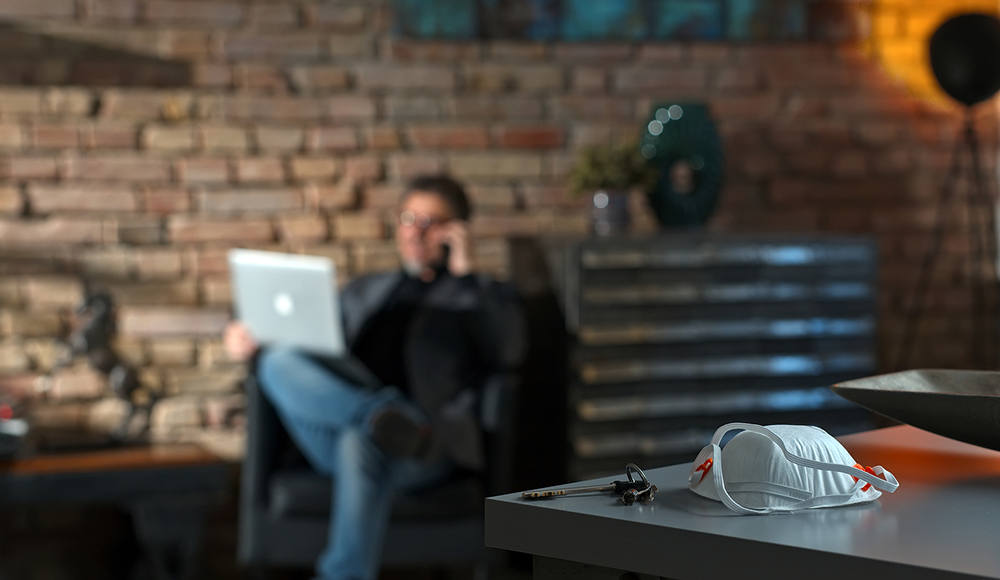Embracing the New Normal: Survey Shows How Employees Are Adjusting to Remote Work

As the results of a survey of 2,000 US office workers conducted by OnePoll on behalf of Citrix reveal, work certainly has a new look. Beds have become desks, bathrooms serve as conference rooms, kids and pets crash virtual meetings, and video calls capture awkward moments when we think our cameras are off.
The unprecedented blending of work and personal life has created some unwelcome anxieties, but the good news is the majority of us are managing to stay productive and engaged.
Ready or Not, Here It Is
While many organizations were forced into remote work arrangements on short notice, most were not caught totally unprepared. In our survey, 38 percent of workers said their organizations were “completely” ready for remote work, with the technology and infrastructure already in place, while a further 45 percent said their companies were “fairly ready.”
Still, the shift to working from home is not without its tech challenges. Slow broadband and WiFi connections at home are proving to be the biggest issues, cited as obstacles by a third of survey respondents. A third of respondents also said strict security protocols/the lack of a single sign-on made it harder to work from home. Conference calls — especially when organizations use multiple programs to hold their calls — were another major pain point for respondents.
The Home as Office
A functional physical workspace is equally important as having the right technology to work remotely. While some employees are lucky enough to have their own dedicated home offices, many find themselves sharing their workspaces with a whole new kind of coworker.
According to our survey, 64 percent of workers are coexisting with partners, 56 percent with young children, 28 percent with infants under the age of two, and 41 percent with teenagers. Only 5 percent are on their own.
To accommodate the needs and schedules of their new officemates — and to minimize distractions — respondents admitted to taking work calls in unusual places. A third have taken calls in their bedrooms, 29 percent in the bathroom, and 24 percent in the garage, among other places.
Smile, You’re on Candid Camera!
Adapting to remote-work technology and etiquette has led to some funny and awkward outcomes. Our survey found that 29 percent of workers say their pets or children have made unexpected appearances on work video calls. Additionally, 44 percent of workers have signed in to video meetings without realizing their cameras were on, only to be caught doing household chores (44 percent), cooking (40 percent), in the bathroom (41 percent), or working out (38 percent), among other things. Others have forgotten to hit the mute button before making “awkward” noises (41 percent), talking about someone on the call (37 percent), or talking to someone else in the room with them (28 percent).
New Daily Routines
Now that our commutes have been reduced from hours to seconds, many of us are learning to adjust our daily routines accordingly. While the survey found that 24 percent of workers are getting up at the same time as they did when commuting to an office, a quarter are sleeping in a little more, and 22 percent are hitting the snooze button until the last possible moment.
Personal morning routines have also changed, with just 34 percent of respondents continuing to shower every day and only 26 percent styling their hair or applying makeup prior to going online. A quarter admit to wearing sweatpants or pajamas while working, and 24 percent are donning workout clothes.
It can be funny and novel to see coworkers in their pajamas on a video call, but for remote work to be truly effective, it’s important for employees to establish repeatable routines so they can be and do their best wherever they happen to be. A positive finding of the study is that 25 percent of respondents say they can get work done more quickly as a result of their new routines, and a further 27 percent are pleased to be freed of the distractions of office politics and chitchat, which kept them from getting work done in the past.
Workers are also taking slightly longer breaks in their new surroundings, allowing themselves an average of 31.18 minutes throughout the day, compared to the 27.89 minutes they took in the office. During their expanded break times, 46 percent are managing the needs of their families, such as setting up home-schooling projects or entertaining their children.
—
Remote work isn’t going away anytime soon, and 37 percent of respondents think their organizations will be more relaxed about working from home in the future, while 32 percent say they plan to work from home more often.
These are certainly challenging times, but within every challenge lies an opportunity. The same investments companies are making in remote work today can help them be more agile when taking advantage of new business and market opportunities in the future.
Donna Kimmel is executive vice president and chief people officer for Citrix.

